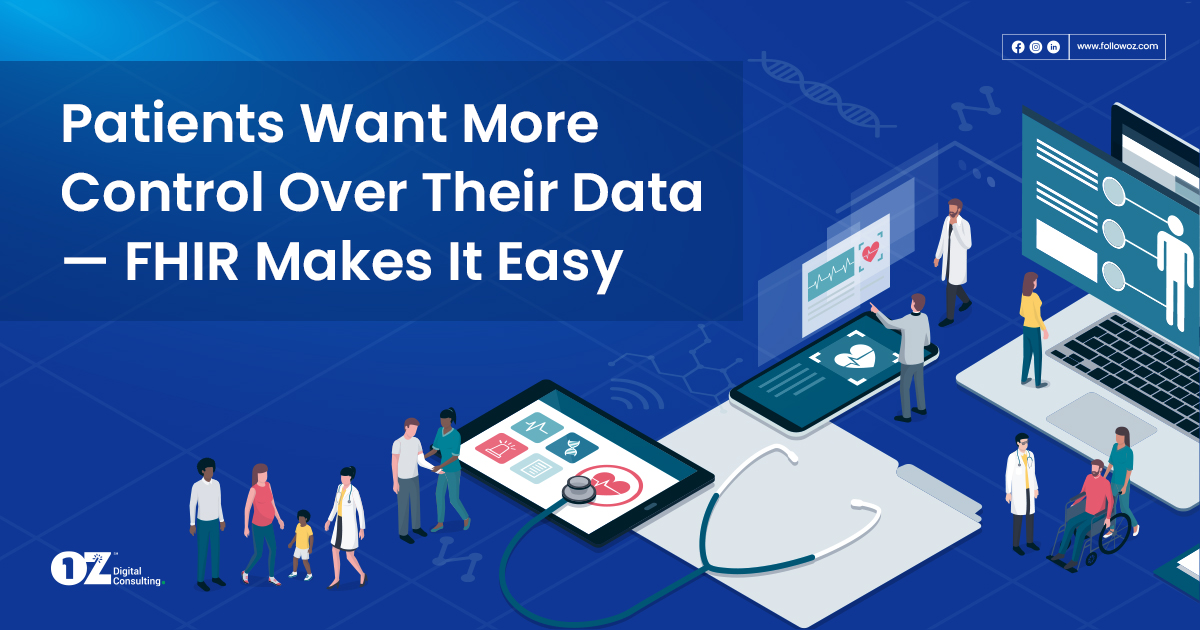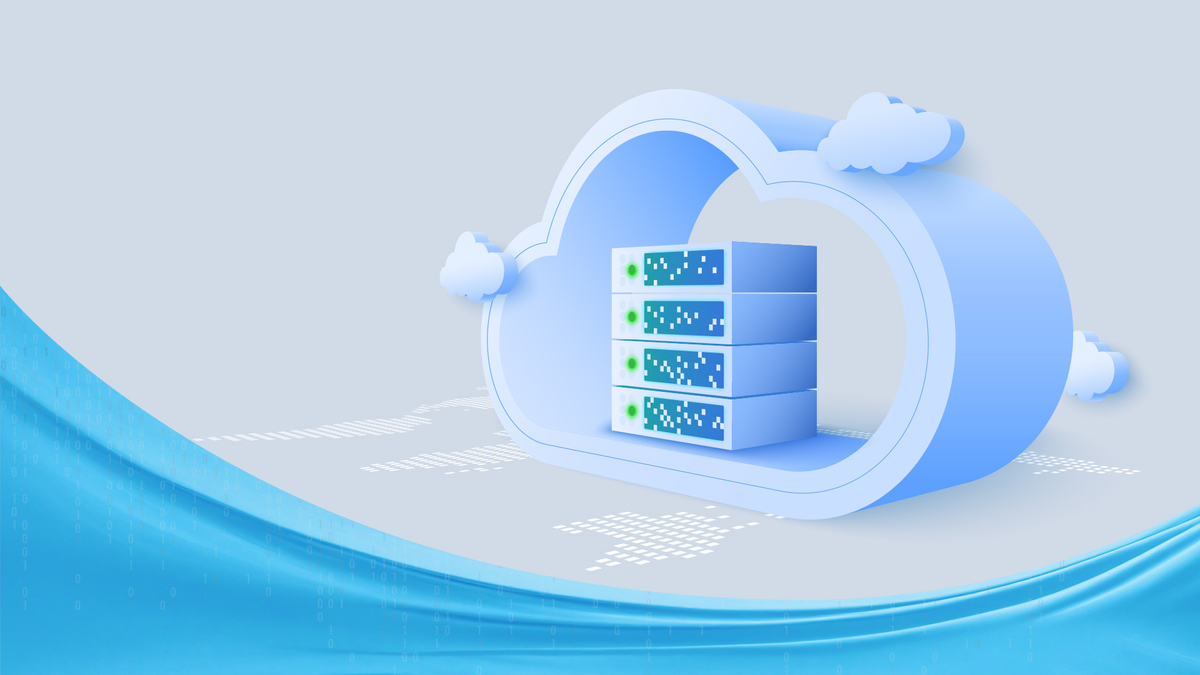By Muhammad Saeed, Senior Manager, Automation and EAI
Patient data has remained buried in the most complex care delivery systems for far too long. On the one hand, we have access to the best therapies and advanced treatments. On the other hand, we must navigate a maze of fragmented data, a patchwork of providers, loosely knit-together clinical systems (laboratory services, radiology, etc.), and a checkerboard of non-interoperable technology systems to access our health records.
Most patients recall less than half of the recommendations given by their providers just one week after a clinical visit. To add to this, patients can’t reach their physicians easily, nor can physicians provide the information they need when needed. The absence of seamless data exchange between patients and providers has long been the bane of the healthcare industry.
That’s why we’re excited for FHIR or (fast healthcare interoperability resources – pronounced “fire”), introduced by Health Level Seven (HL7) as an interoperability standard to help the free exchange and flow of data between all stakeholders — patients, providers, and payers. This proposed standard could be a giant leap for the healthcare industry as it helps synthesize patient data and support them continuously.
FHIR: Helps patients with their health data
FHIR is built on well-established web standards already in use in the digital world — JSON and REST APIs — and standardizes how data is accessed and shared from any device. Here are all the ways FHIR creates a single source of patient data:
- Unlike the old standard C-CDA (consolidated clinical document architecture), which only transfers entire documents, FHIR technology can share specific data based on modern, open-web protocols like those used by search engine browsers. For example, let’s say a physician needs a single immunization record. FHIR can process and return precisely what’s required instead of providing an entire case file consisting of hundreds of pages. Physicians often need help locating the data in CCDAs, which are often lengthy, complex documents. And when they do find it, they may have to copy the information into their EHRs.
- Developers can leverage FHIR to create technology apps for patients — for example, a health app to read a patient’s blood glucose levels. The data from the app can be sent to a personal health record, to a physician, and to a pharmacy to adjust insulin levels for a refill prescription, which the patient can pick up in minutes. The Apple Health Records app uses FHIR to help people download health information from multiple providers and combine it into a single health record on their iPhones.
- FHIR can sync different files housed in other systems, creating a single source of patient data. It can aggregate multiple provider records, test results, wearable device data, and prescription details into one medical record.
Facilitates Seamless Health Data Exchange Between Health Systems
In the past, exchanging health data involved sending documents by fax or mail. Clinics and hospitals would often receive lab results without accompanying patient history summaries. Sometimes, information would have to be rekeyed to make it suitable for Electronic Health Records (EHR).
Many interoperability standards have since evolved to address these discrepancies, though most of them fell short of what they delivered. For the first time, healthcare practitioners are seeing a silver lining in FHIR technology, and with good reason:
- FHIR allows the creation of apps that circumvent legacy systems and feed information directly into EHR systems and clinical workflows using familiar technologies.
- Medical devices from different manufacturers can send data to EHRs in clinics and hospitals. Even information residing in data silos can be easily shared.
- FHIR “resources” or “data modules” can be brought together and combined into clinical and administrative applications, saving time and money. These resources can be streamlined into systems designed to solve real-world clinical and administrative problems at a fraction of the cost of existing alternatives.
Is FHIR worth the hype?
FHIR technology is a hot topic in the healthcare IT industry and rightfully. But is it the game-changer it’s portrayed to be? Its rapid adoption speaks for itself. Today, almost all healthcare software is built with FHIR technology.
Because it is based on a simple API design, developers can create plug-and-play applications that can interface with any EHR (electronic health record) and feed information directly into the provider workflow. It eliminates all the gaps in a typical document-based exchange. That’s not all. Other advantages include:
- Compatibility with legacy standards
Derived from HL7 Version 2 messaging and HL7 Version 3 Clinical Document Architecture (HL7 CDA), FHIR can be employed with HL7v2 and HL7 CDA. The FHIR API further enables seamless integration of third-party apps with existing systems.
- Decipherable and valuable data
Since the HTTPS protocol is the foundation for FHIR, you can retrieve and analyze FHIR resources to support machine learning, AI, and other forms of data analytics. These capabilities help you gain a deeper understanding of your healthcare data.
- Efficient data exchange
FHIR’s resource-based approach streamlines data exchange, improving efficiency and accuracy. By employing a standardized format for health information, FHIR lets you build custom templates from shared base resources, eliminating discrepancies in data templates. This approach improves the accuracy and readability of data exchanged across health systems.
With FHIR, you do not have to individually modify the data template of every health IT system, as data is exchanged as resources. Patients, admissions, and medications are exposed as services, allowing consumer mobile apps to use GET and POST requests for retrieving and manipulating only the relevant data.
The FHIR Manifesto
Although the widely cited “FHIR Manifesto” did not exist during the inception of FHIR, significant efforts led to the creation of an official document called the Fundamental Principles of FHIR.
- FHIR prioritizes implementation
- FHIR provides a flexible framework for interoperability
- FHIR keeps complexity where it belongs
- FHIR supports but does not mandate tight specifications
- FHIR leverages open-source development principles
- FHIR is free to use
- FHIR supports multiple exchange paradigms/architectures
- FHIR leverages standard web technologies
- FHIR is forward and backward compatible
- Tooling requirements are mainstream and minimal
Final Thoughts
Having timely access to the right information is table stakes in the healthcare industry and is not limited to patient care delivery. Whether at the point of care or the billing office, we know there’s enormous potential for improvement. Healthcare data should be easier to access, understand, and navigate for everyone — patients, providers, and payers — every time. FHIR marks a new beginning in the era of healthcare, and this time, there’s no looking back.
Ready to learn more? Contact us.



